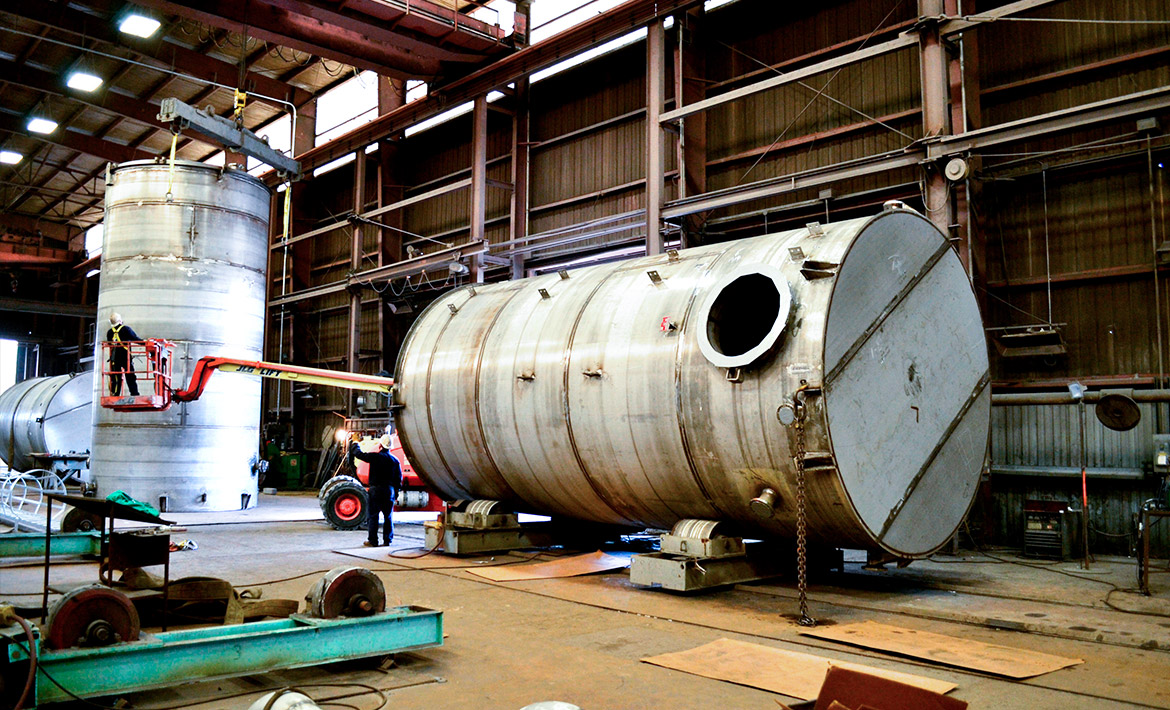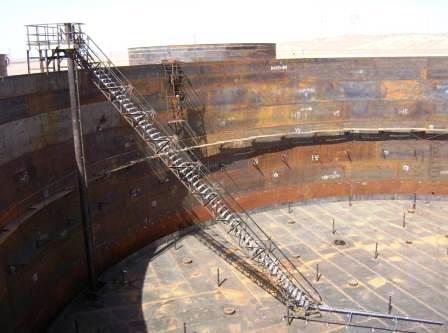Recognizing the Relevance of Welding Evaluation in Top Quality Assurance Processes
Welding inspection is a necessary part of quality control in building and manufacturing. It assures that welds follow well established standards, which is essential for architectural integrity. Numerous assessment strategies, from aesthetic to ultrasonic testing, assistance identify flaws early. This proactive strategy not just prevents costly repair work yet also improves security. Comprehending the nuances of welding inspection can disclose its wider ramifications for market compliance and online reputation. API 650 Welding Inspection. What lies below the surface of these techniques?
The Role of Welding Examination in Quality Assurance
While welding is a crucial procedure in various markets, its top quality and stability pivot substantially on effective assessment techniques. Welding assessment acts as a secure, guaranteeing that welds meet well established requirements and specs. This procedure not only recognizes defects yet likewise assesses the total workmanship, consequently contributing to the safety and long life of welded frameworks. Examinations are indispensable to quality control, as they assist maintain and protect against pricey failures conformity with sector regulations. By utilizing proficient examiners, companies can boost their operational efficiency and maintain their reputations. In addition, the insights acquired from inspections can educate continuous enhancement, causing far better approaches and training for welders. Eventually, welding examination works as a vital link in the high quality assurance chain, ensuring that every joint is qualified and trusted of standing up to the roughness of its desired application. This diligence is crucial for the honesty of infrastructure and the safety of end users.
Kinds of Welding Inspections
Welding examinations incorporate a variety of approaches created to examine the top quality and stability of welds. These examinations are vital in ensuring compliance with sector requirements and specifications. Typical types of welding examinations consist of visual assessment, which enables for instant identification of surface abnormalities; ultrasonic screening, which utilizes high-frequency acoustic waves to identify internal flaws; and radiographic testing, employing X-rays or gamma rays to reveal weld honesty under the surface (API 650 Welding Inspection). In addition, magnetic bit screening is used to identify surface area and near-surface gaps in ferromagnetic materials, while dye penetrant screening supplies a technique for exposing surface-breaking flaws. Each sort of assessment serves a particular objective, adding to the total quality control process. By using a combination of these techniques, inspectors can supply a detailed evaluation of welding quality, eventually making sure the security and reliability of bonded frameworks
Common Issues Detected in Welding
A variety of common flaws can occur during the welding procedure, impacting the integrity and efficiency of bonded frameworks. These flaws include porosity, which involves caught gas pockets within the weld, weakening its toughness. Splits might also form because of fast cooling or incorrect joint style, bring about possible failure under tension. Insufficient combination happens when there is insufficient melting of the base metal, resulting in weak bonds. One more defect, damaging, involves the removal of base steel along the weld side, developing a considerable structural weak point. Additionally, too much spatter can impact the look and demand further cleaning or fixing. Imbalance can lead to uneven weld grains, compromising the total quality. Recognizing these problems early via proper evaluation strategies is vital to assure the dependability and safety of bonded elements, inevitably securing the efficiency of the whole framework.

Benefits of Regular Welding Evaluations
Routine examinations play a significant duty in keeping the high quality and safety of welded frameworks, specifically because of the usual defects previously detailed. These inspections give a chance to identify and correct concerns before they intensify right into major problems, guaranteeing architectural integrity. By identifying imperfections early, companies can reduce repair work prices and prevent prospective task delays.
Furthermore, normal welding inspections enhance compliance with sector standards and policies, fostering trust among stakeholders. This adherence not just secures the company's track record but also adds to boosted safety and security for personnel and the public.
Constant evaluations assist in better training and skill growth for welders, as feedback from inspections can lead improvements. Ultimately, the benefits of regular welding assessments expand beyond prompt quality control, advertising lasting operational effectiveness and reliability in welded frameworks.
Best Practices for Effective Welding Inspection
Carrying out finest practices in welding inspection is necessary for ensuring the highest possible standards of top quality and security. Assessors have to be effectively educated and certified, possessing an extensive understanding of welding techniques and products. Making use of sophisticated evaluation innovations, such as ultrasonic screening and radiography, boosts the discovery of problems that might not show up to the naked eye. Establishing a clear evaluation strategy, detailing the criteria and regularity of examinations, assurances uniformity and thoroughness.

Documenting all findings diligently is essential for traceability and responsibility. Routine calibration of examination equipment ensures accuracy, while maintaining a clean and organized work space lowers the threat of contamination. Additionally, cultivating open interaction amongst team members facilitates the sharing of insights and promotes a advice culture of quality. By sticking to these ideal practices, companies can notably improve their welding quality control procedures, ultimately resulting in much safer and much more dependable products.

Regularly Asked Questions
What Credentials Are Required for a Welding Assessor?
A welding examiner usually requires accreditation from acknowledged organizations, such as the American Welding Society (AWS) or the International Institute of Welding (IIW), along with relevant experience and understanding in welding procedures and quality criteria.
Exactly How Frequently Should Welding Inspections Be Carried Out?
Welding assessments need to be done regularly, commonly at different job get redirected here phases, consisting of prior to, during, and after welding procedures - API 650 Welding Inspection. The frequency often relies on task specifications, governing demands, and the complexity of the welds involved
What Are the Expenses Linked With Welding Assessments?
The expenses related to welding assessments vary commonly, typically varying from a few hundred to a number of thousand dollars, depending on aspects like assessment type, task size, and area, impacting total task spending plans and timelines.
Can Welding Inspections Be Carried Out Remotely?
Yes, welding inspections can be performed remotely using innovative innovations such as drones, video cameras, and ultrasonic testing. These methods enable assessors to assess weld integrity without being physically existing, boosting performance and safety and security in numerous environments.
Just How Do Examination Outcomes Impact Task Timelines?
Evaluation results can significantly impact task timelines by identifying issues early, leading to needed rework or modifications. Hold-ups may happen if inspections reveal issues calling for resolution, eventually impacting general task conclusion and budget plan adherence.
Welding assessments incorporate a variety of techniques made to evaluate the high quality and honesty of welds. Usual types of welding inspections include aesthetic assessment, which allows for instant recognition of surface abnormalities; ultrasonic testing, which makes use of high-frequency sound waves to detect internal defects; and radiographic testing, employing X-rays or visit this site right here gamma rays to expose weld stability beneath the surface. Constant evaluations assist in far better training and skill development for welders, as responses from examinations can guide enhancements. Applying ideal techniques in welding examination is important for assuring the greatest requirements of high quality and safety and security. Welding evaluations must be performed on a regular basis, usually at different project stages, consisting of before, throughout, and after welding procedures.